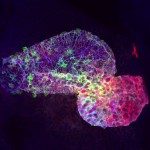Link to Pubmed [PMID] – 24496575
Lab. Anim. 2014 Jul;48(3):178-192
The microbiological quality of experimental animals can critically influence animal welfare and the validity and reproducibility of research data. It is therefore important for breeding and experimental facilities to establish a laboratory animal health monitoring (HM) programme as an integrated part of any quality assurance system. FELASA has published recommendations for the HM of rodent and rabbit colonies in breeding and experimental units (Nicklas et al. Laboratory Animals, 2002), with the intention of harmonizing HM programmes. As stated in the preamble, these recommendations need to be adapted periodically to meet current developments in laboratory animal medicine. Accordingly, previous recommendations have been revised and shall be replaced by the present recommendations. These recommendations are aimed at all breeders and users of laboratory mice, rats, Syrian hamsters, guinea pigs and rabbits as well as diagnostic laboratories. They describe essential aspects of HM, such as the choice of agents, selection of animals and tissues for testing, frequency of sampling, commonly used test methods, interpretation of results and HM reporting. Compared with previous recommendations, more emphasis is put on the role of a person with sufficient understanding of the principles of HM, opportunistic agents, the use of sentinel animals (particularly under conditions of cage-level containment) and the interpretation and reporting of HM results. Relevant agents, testing frequencies and literature references are updated. Supplementary information on specific agents and the number of animals to be monitored and an example of a HM programme description is provided in the appendices.

